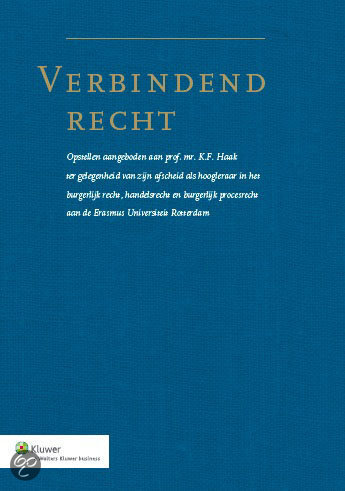Functieleer in het merkenrecht en de holistische benadering van het HvJ
 Bijdrage ingezonden door Tobias Cohen Jehoram, Erasmus Universiteit Rotterdam en De Brauw Blackstone Westbroek.
Bijdrage ingezonden door Tobias Cohen Jehoram, Erasmus Universiteit Rotterdam en De Brauw Blackstone Westbroek.
For this article I turn to a theory developed by the (European) Court of Justice ("CoJ") in the field of trade mark law: the function theory. In the past years it has become the pivot of trade mark protection within the EU, which is remarkable as no word on the function can be found either in the Trade Marks Directive (89/104/EEC of 21 December 1988; "TMDir") or the Community Trade Mark Regulation (last amended and codified version: 207/2009 of 26 February 2009; "CTMR"). This is of course odd, as the TMDir and CTMR aim to provide full harmonization in particular on the protection granted to trade marks in case of use of signs in relation to goods or services; this is one of the most important aspects of an internal market within the EU. It was thus conceived, created and defined solely by the CoJ. And it continues to shape this theory. That fact in itself shows that there is a lack of legal certainty here, but it also underlines the need for a clear interpretation, both to appreciate the effect of what the CoJ has decided to date, and to try to get a grip on where the CoJ is heading. Of course, for this is it essential to see where the CoJ is coming from and what is the (legal) background of this theory.
Below I will try to first provide a theory on the genesis of the function theory; let me already now give away that I think it comes from an adjacent area of the law. This will be followed by a synthesis of where we stand today. I will also aim to indicate what his might mean for future developments. Finally, I will have a brief look as to where else the ECJ is applying non-trade mark doctrine in trade mark law.
Table of contents
What is the function theory?
Background of the function theory
The protected functions of the trade mark
Which protected trade mark function is protected when?
- Application in art 5(1)(a) TMDir situations
- Application in art 5(1)(b) TMDir situations
- Application in art 5(2) TMDir situations
The holistic approach of the CoJ
Liber amicorum K.F. Haak is verkrijgbaar bij bol.com.


























































































